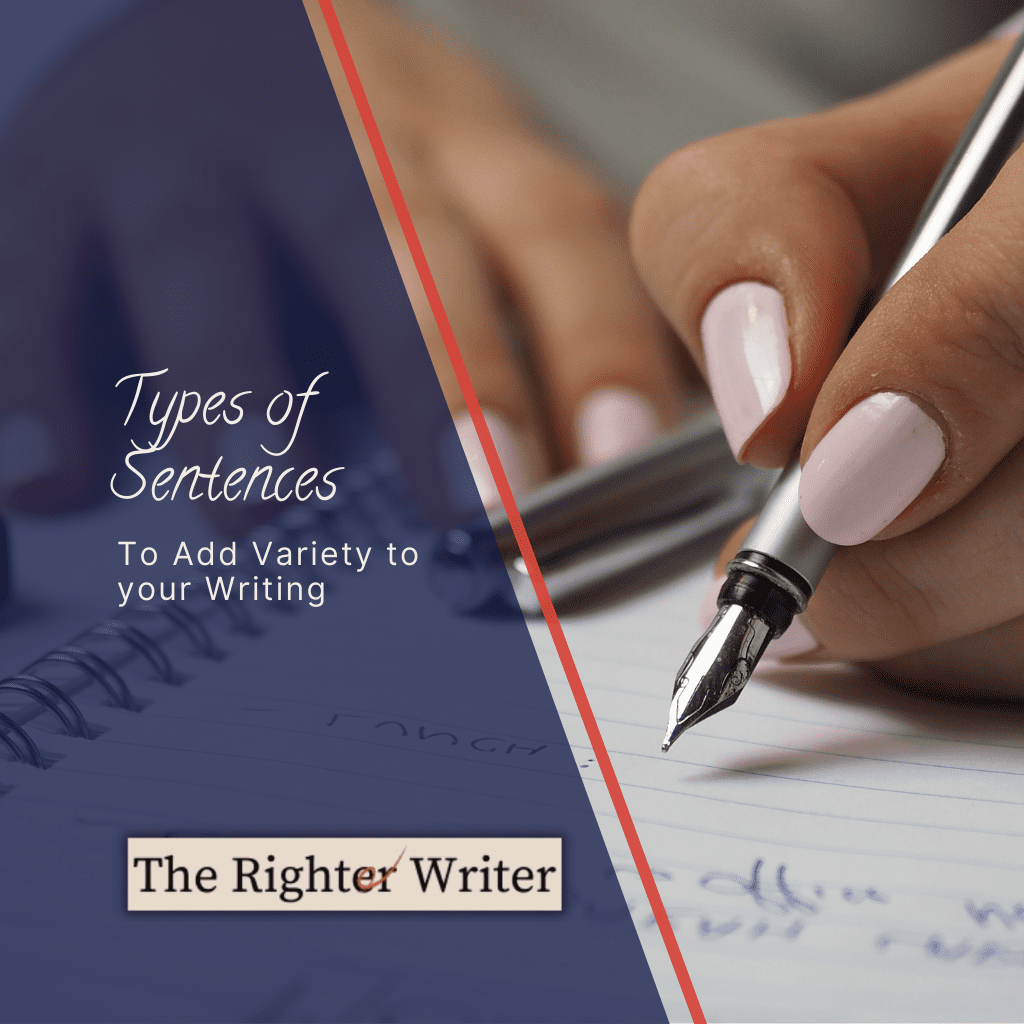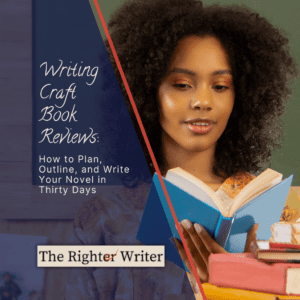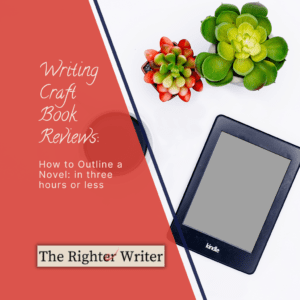
Writing Craft Book Reviews: A Book A Week
Fourth and last (for now!) in our series of book reviews featuring Kindle Unlimited books that explain ways to outline a novel. Let’s get ready for NaNoWriMo!
I'm an affiliate.
Some of the links on this page are affiliate links, but the opinions in my posts are my own, and I only mention products that I like and use myself. As an Amazon Associate, I earn from qualifying purchases. What that means is that if you click one of the links on my site and make a purchase, I might recieve compensation at no extra cost to you.

So, in the past month, we’ve covered nouns, verbs, and adjectives. Next, we put them all together to make sentences.
These building blocks come in all shapes and sizes, but each one plays an important role in creating a successful piece of writing.
A well-crafted sentence can paint a picture, evoke an emotion, or convey a complex idea. But just as importantly, a good sentence can make your writing fun to read.
After all, who wants to plod through a page of choppy, disconnected thoughts?
By taking the time to construct well-formed sentences, you can ensure that your work is both informative and enjoyable to read.
So the next time you sit down to write, remember that your sentences are the foundation on which your entire piece will be built.
There are three main types of sentences in English: simple, compound, and complex.
A simple sentence consists of a single clause (a clause is a thing—the subject—and what the thing is doing—the verb), and it’s the shortest and simplest kind of sentence.
A compound sentence is made up of two or more clauses, which are joined together by a conjunction (conjunctions are words like and, but, or so).
A complex sentence starts with a simple sentence and then adds one or more subordinate clauses.
The subordinate clauses give you more information about the main clause (that simple sentence that is the base).
To write clear and effective sentences, it’s important to know how to use these different types of sentences.
Simple sentences are best for short, straightforward statements.
There’s no denying that a well-crafted, complex sentence can be a beautiful thing. But sometimes, simple is best.
Simple sentences are just that: simple.
They contain one independent clause and no dependent clauses.
An independent clause (AKA a main clause) has one subject (the thing the sentence is about) and one verb (what that thing is doing), and it is a complete thought that stands on its own.
Simple sentences look like this:
I like pizza.
They skipped across the lawn.
Simple sentences are easy to write.
For instance, when you’re trying to make a point quickly and clearly, a simple sentence is often the most effective way to do it. That’s why a lot of advertisements use short, pointed sentences in their ad copy.
Imagine a car rental company is looking at these two ads:
Example 1: When you come to our front desk, we try hard to give you everything you need, so that your experience will be the best.
Example 2: We do our best for you.
Which do you think is more effective? Which will you notice and remember?
The same is true when you’re writing for an audience with a limited attention span—in other words, pretty much everyone on the internet.
In general, shorter sentences are easier to read and understand, so they’re usually a good choice when you’re talking to an audience that isn’t intimately familiar with your topic.
Have you ever clicked away from a blog post or article because it just seemed too much work to follow? Articles that are paragraph after paragraph of long compound or complex sentences are difficult to read—sometimes too difficult to bother with.
(Yes, I see the irony in writing that last sentence in a post THIS LONG!)
After all, isn’t the point of writing to show off your lyrical prose and expansive vocabulary?
While it’s true that fiction presents an opportunity to be creative with language, that doesn’t mean that simple sentences don’t have a place in the literary world.
In fact, some of the most famous writers in history relied heavily on simple sentences to tell their stories. From Ernest Hemingway to J.D. Salinger, many authors have used short, declarative sentences to great effect.
Using simple sentences works for highlighting a single idea.
Take the first line from The Color Purple by Alice Walker:
You better not never tell nobody but God. It’d kill your mammy.
What if we put those two sentences with their individual ideas together as one?
You better not never tell nobody but God because it’d kill your mammy.
The impact just isn’t there, is it? It needs the individual simple sentences to frame the individual ideas.
A simple sentence also adds punch when it’s combined with longer sentences.
A good example is this passage from A Christmas Carol by Charles Dickens:
The jocund travellers came on; and as they came, Scrooge knew and named them every one. Why was he rejoiced beyond all bounds to see them! Why did his cold eye glisten, and his heart leap up as they went past! Why was he filled with gladness when he heard them give each other Merry Christmas, as they parted at cross-roads and bye-ways, for their several homes! What was merry Christmas to Scrooge? Out upon merry Christmas! What good had it ever done to him?
“The school is not quite deserted,” said the Ghost. “A solitary child, neglected by his friends, is left there still.”
Scrooge said he knew it. And he sobbed.
Charles Dickens, A Christmas Carol, Stave 2

Most of Dickens’ prose is made of flowery complex sentences. The last two sentences of the passage, though, are simple sentences of one idea each.
They are the final beat of the scene, and the contrasting brevity lets each one land on the reader’s heart with a solid thump.
Compound sentences can be used to add information or make a longer statement more concise.
A compound sentence has two or more independent clauses (simple sentences made up of a subject and a verb) and no dependent clauses (a dependent clause is a bit that doesn’t make a complete sentence all on its own).
In other words, a compound sentence is two or more sentences that can stand alone as individual sentences, joined together by a conjunction.
For example:
I went to the store, and there was a robber.
The two clauses in this sentence are: I went to the store and there was a robber.
Notice that each clause could be its own sentence:
I went to the store.
There was a robber.
However, when we put them together with a conjunction like the word and, we have a compound sentence.
(You can remember the list of conjunctions with the acronym FANBOYS: For, And, Nor, But, Or, Yet, and So.)
Compound sentences are common because they make your writing sound smoother than a string of simple sentences, but they are still easy to understand.
They can be just as catchy and easy to remember as simple sentences, but they can also convey deeper, more complicated ideas.
Writing comes from reading, and reading is the finest teacher of how to write.”
— Annie Proulx
“One day I will find the right words, and they will be simple.”
— Jack Kerouac
“Get it down. Take chances. It may be bad, but it’s the only way you can do anything really good.”
— William Faulkner
Can you look at these sentences and identify the two independent clauses? What about the conjunction that is linking them together?
A semicolon is another way to combine two simple sentences that are related to each other into one compound sentence.
“I am not at all in a humor for writing; I must write on until I am.”
— Jane Austen
“I can shake off everything as I write; my sorrows disappear, my courage is reborn.”
— Anne Frank
“Substitute ‘damn’ every time you’re inclined to write ‘very;’ your editor will delete it and the writing will be just as it should be.”
— Mark Twain
Before we get into complex sentences, I want to reassure you:
There are a lot of grammar words that you probably haven’t heard since high school.
Don’t worry, you don’t really have to know the words—it’s not like there’s a test on them—and they’ll make more sense when you look at the examples.
A complex sentence has two parts: an independent clause and a dependent clause.
The independent clause is the main part of the sentence, and it can stand alone as a complete thought.
On the other hand, the dependent clause is subordinate to the independent clause, which means it can’t stand alone as a complete thought.
There are three basic types of dependent clauses (these are the ones that are not complete sentences by themselves):
If it is giving the reader information about the verb, or what happened in the sentence, then the group of words is an adverbial clause.
These answer the questions when, where, why, how, or how much.
Examples:
After I got married, I moved to Oregon. (After I got married tells when I moved.)
She got a flat tire on the way to the school. (On the way to the school tells where she got the flat.)
I can’t go because I have to work. (Because I have to work explains why I can’t go.)
With a grunt, they cleared the fence. (With a grunt shows how they cleared the fence.)
All of these examples are complex sentences, because they have an independent clause, which can stand alone as a complete thought (I moved to Oregon, she got a flat tire, etc.), and a dependent clause, which isn’t a complete thought (phrases like because I have to work or with a grunt).
Relative clauses are sometimes called adjective clauses because they function like an adjective and give more information about a noun.
You’ll know these because they start with one of these words: who, whom, which, that, whose (relative pronouns) or where, why, when (relative adverbs).
The woman who is wearing the red hat is next in line. (The phrase who is wearing the red hat tells us more about the woman.)
The man to whom you were talking is a wanted criminal. (The man is the subject, but we don’t know which man until we get to the phrase to whom you were talking.)
My car, which I bought just last week, is totaled. (Which I bought just last week gives us more information about my car.)
The 2000s, when I was teaching in Japan, were a long time ago. (The main clause is the 2000s were a long time ago, the noun is the 2000s, and the phrase when I was teaching in Japan tells the reader more about that noun.)
Noun clauses take the place of a noun, no matter where the noun is in the sentence.
The way to figure out if something is a noun clause is to try to substitute a pronoun (it, her, him, etc.) for the entire phrase. If you can replace the phrase with just a pronoun, it’s a noun clause.
The company will hire whomever is best. (The company will hire her.)
I don’t know why the electricity is out. (I don’t know it.)
My favorite time of year is when the leaves fall. (It is my favorite time of year.)
You are not responsible for what your family does. (You are not responsible for it.)
What was in the box was worth a lot of money. (It was worth a lot of money.)
You can find the noun dependent clauses in these sentences, right?
Here’s a hint: look for one of these words: how, that, what, whatever, when, where, whether, which, whichever, who, whoever, whom, whomever, why.
Now that we have simple, compound, and complex sentences down (we do have them down, right?) I should mention that you can combine the last two into compound-complex sentences.
I went to the store where I had met my wife, and there was a robber.
I went to the store is a simple sentence, and that’s the core of this.
We add the second independent clause (a second simple sentence), there was a robber, and we get this compound sentence:
I went to the store, and there was a robber.
Next, I can add more information to tell the reader which store we are talking about—it’s the one where I had met my wife—and we get the compound-complex sentence.
I went to the store where I had met my wife, and there was a robber.
What if we added another adjective clause (extra information about the noun) about the robber?
I went to the store where I had met my wife, and there was a robber with a gun.
Or if we added another conjunction and another independent clause (a bit that could stand alone as a sentence)?
I went to the store, where I had met my wife, and there was a robber with a gun, so I punched him.
We can keep going. There is really no limit to the number of clauses—dependent and independent—we could combine into a single sentence.
Stuart Little by E.B. White is a book for children, but it still has this sentence, which clocks in at 107 words:
“In the loveliest town of all, where the houses were white and high and the elms trees were green and higher than the houses, where the front yards were wide and pleasant and the back yards were bushy and worth finding out about, where the streets sloped down to the stream and the stream flowed quietly under the bridge, where the lawns ended in orchards and the orchards ended in fields and the fields ended in pastures and the pastures climbed the hill and disappeared over the top toward the wonderful wide sky, in this loveliest of all towns Stuart stopped to get a drink of sarsaparilla.”
— E.B. White, Stuart Little
Now that we have covered the different types of sentences, how do we put them together?
If you’re like most people, you probably use a mix of simple, compound, and complex sentences in your writing without giving it much thought.
But believe it or not, each type of sentence serves a distinct purpose.
The key to creating effective prose is variety.
If you use the same type of sentence over and over again, your writing will become boring and monotonous. A good mix of sentence types keeps things interesting and makes your writing more dynamic.
Perhaps you’ve seen this quote from Gary Provost that illustrates how sentence variety can affect how your writing comes across to a reader:

There was a lot of information in this post, I know. But don’t worry, it’s not information that you have to memorize.
Just think about your sentences—not as you’re writing your first draft or even your second, but as you are editing. Eventually, it will be something you feel, and it will be second nature!
I would love to hear from you.
Tell me what you liked—or what you hated, whichever!
And if you have written something and shared it with the world, please drop the link in the comments. I’d love to read it.

Fourth and last (for now!) in our series of book reviews featuring Kindle Unlimited books that explain ways to outline a novel. Let’s get ready for NaNoWriMo!

Third in our series of book reviews featuring Kindle Unlimited books that explain ways to outline a novel. Let’s get ready for NaNoWriMo!

Second in our series of book reviews featuring Kindle Unlimited books that explain ways to outline a novel. Let’s get ready for NaNoWriMo!

I help authors, researchers, business people, students, and web marketers to polish their writing before they send it out into the world.
